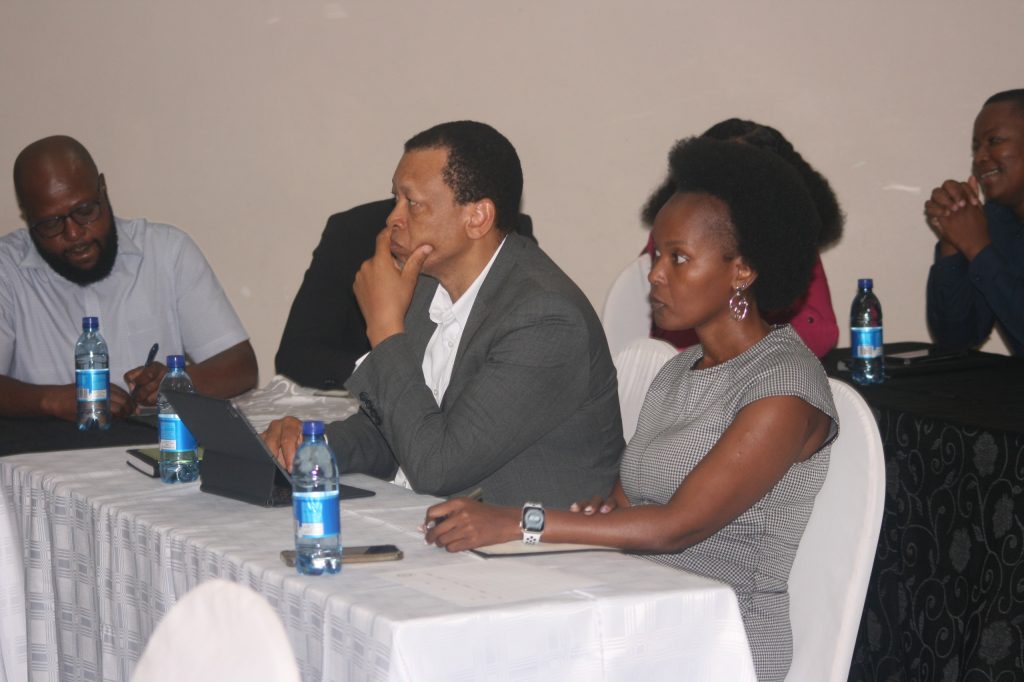
By Phiwa Sikhondze
The Eswatini Energy Regulatory Authority (ESERA) has approved an average electricity tariff increase of 14.67% for the 2025/26 financial year and 10.91% for 2026/27, significantly lower than the 25.51% and 27.06% hikes initially requested by the Eswatini Electricity Company (EEC).
This decision was announced by the ESERA Chief Executive Officer, Sikhumbuzo Tsabedze, at a press conference held at the Mountain View Hotel in Mbabane.
EEC had applied for a revenue requirement of E4.22 billion for 2025/26 and E4.57 billion for 2026/27. However, after identifying errors in the application, ESERA revised the figures to E4.46 billion and E4.85 billion, respectively.
Despite this, the regulator only approved a revenue allocation of E3.46 billion for 2025/26 and E3.68 billion for 2026/27. The new tariffs take effect on April 1, 2025, and April 1, 2026, respectively.
The tariff adjustments will affect different consumer categories. Tsabedze stated, “Domestic tariffs will increase by 14.1%, whilst energy charges for corporate time-of-use customers and corporate non-time-of-use customers will increase by 14.00% in each of the two financial years. Demand charges will increase by 14.00%, whilst time-of-use and non-time-of-use facility charges and access charges will increase by the approved inflation of 5.02% (FY2025/26) and 4.86% (FY2026/27).”
With the approved tariff adjustments, consumers will receive fewer electricity units per E100 spent compared to previous years. For domestic customers, a E100 purchase currently provides 43 units, but this will decrease to 38 units in 2025/26 and 33 units in 2026/27 (levy inclusive).
For lifeline customers, who are considered the most vulnerable, E100 currently buys 72 units. With the approved tariff increase, this will drop to 67 units in 2025/26 and 62 units in 2026/27. Tsabedze noted, “The lifeline tariff increase has been limited to 7.35% in consideration of the vulnerability of this tariff category to adverse socio-economic conditions.”
For small commercial customers—including spaza shops and churches—a E100 purchase currently provides 36 units, which will decline to 32 units in 2025/26 and 28 units in 2026/27. Additionally, facility charges for this category will rise from the current E189 per month to E198.51 in 2025/26 and E208 in 2026/27.
The regulator said multiple factors influenced the tariff decision, including stakeholder consultations, economic analysis, and power import costs.
Notably, Eswatini relies on power imports from Eskom, and NERSA has approved Eskom tariff hikes of 12.74% for 2025/26 and 5.36% for 2026/27, which will impact local electricity costs.
ESERA also factored in Regulatory Clearing Account (RCA) balances, approving an E80.75 million under-recovery for 2022/23 and an E51.10 million over-recovery for 2023/24. The regulator also ruled that E255.19 million in depreciation recoveries from 2014/15 to 2020/21 should be refunded to customers.
A detailed tariff order, including all stakeholder submissions and regulatory conditions, will be published on the ESERA website (www.esera.org.sz) in due course.
